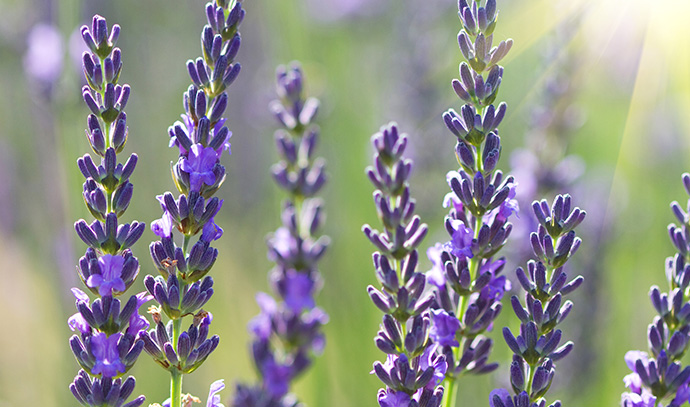senior-woman-picking-vegetables-kitchen-garden
The benefits of companion planting
Jenny Westdorp, December
2016
Once the realm of hippy, trippy home gardeners, companion planting has gained acceptance right across the range, from backyard gardeners through to commercial agricultural ventures.
So, what exactly is companion planting? Essentially it is the clever placement of plants, especially vegetables and herbs that help each other reach their optimum growth and vitality by deterring pests, attracting beneficial bugs, bees and birds, fixing nitrogen and enhancing flavours. Thoughtful planting minimises ‘chemical warfare’ in your garden by encouraging nature to do what it does best.
 Lavender not only smells divine, but is also very beneficial in the garden[/caption]
Lavender not only smells divine, but is also very beneficial in the garden[/caption]
Nature’s nurturers
Sometimes physical reasons can make all the difference to a plant’s health, or its untimely death. For example, tall plants can provide shelter from the elements for their more fragile neighbours. Small spaces can be maximised by training climbing plants over taller plants and other plants work well together because their roots grow to different depths so they don’t have to compete for water and nutrients.Masking, repelling and decoy plants
Step away from the pesticides and other chemicals, as Mother Nature, in her wisdom, has designed a range of pest controlling plants that can attract beneficial insects that will in turn eat those annoying critters who are happily chomping through your prize garden. Examples include dill, fennel and elder whose flowers and foliage are a delicacy for the kind of insects you want to attract. On the flip side, plants with a strong scent, such as basil, sage and oregano will repel or confuse unwanted insects. Masking plants like scented geranium, lavender and thyme produce strong oils and a scent that effectively ‘hides’ the plants insects might be looking to munch on. Repellent plants like tansy, wormwood or cotton lavender produce a scent or taste that is so bitter or distasteful that insects will avoid it. Then there’s the heroes of the garden, the decoy ‘sacrificial’ plants that are prepared to suffer or die to protect their companions. An example is nasturtium, which is beloved by insects and will draw them away from other plants nearby. [caption id="attachment_6542" align="alignleft" width="690"] Lavender not only smells divine, but is also very beneficial in the garden[/caption]
Lavender not only smells divine, but is also very beneficial in the garden[/caption]



